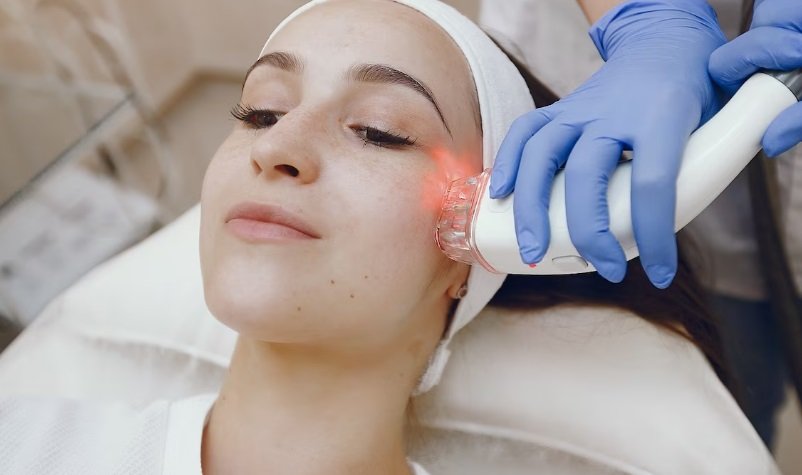In today’s fast-paced world dominated by screens and digital devices, concerns about children’s eye health have become increasingly prevalent. Among these concerns, myopia, or nearsightedness, stands out as a significant issue affecting children worldwide. With the prevalence of myopia on the rise, parents, and caregivers are seeking effective strategies to control its progression and safeguard their children’s vision for the future.
Understanding Childhood Myopia
Myopia is a common refractive error characterized by difficulty seeing distant objects clearly while nearby objects remain in focus. In recent years, the prevalence of myopia has surged, particularly among children. According to research, the global prevalence of myopia is projected to reach alarming levels by 2050, affecting nearly half of the world’s population. Several factors contribute to the development of myopia in children, including genetic predisposition, environmental influences, and lifestyle habits. While genetics play a significant role in determining a child’s susceptibility to myopia, environmental factors such as prolonged near-work activities, limited outdoor time, and excessive screen exposure also contribute to its onset and progression.
The Impact of Myopia on Children’s Health
The consequences of childhood myopia extend beyond blurry vision. Left uncontrolled, myopia can increase the risk of developing sight-threatening conditions later in life, such as cataracts, glaucoma, and retinal detachment. Moreover, severe myopia is associated with higher healthcare costs and diminished quality of life due to the need for corrective measures such as eyeglasses, contact lenses, or even refractive surgery. In addition to its physical implications, myopia can also impact children’s academic performance and social interactions. Children with uncorrected myopia may struggle to see the board in classrooms, experience difficulty participating in sports and outdoor activities, and face challenges in engaging with peers due to impaired vision.
Addressing the Challenge: Strategies for Myopia Control in Children
Fortunately, several strategies have been identified to effectively manage and control myopia progression in children. These interventions aim to modify environmental and lifestyle factors while promoting healthy visual habits to support optimal eye development. Let’s explore some of the most promising approaches to children myopia control:
Outdoor Time: Encouraging children to spend more time outdoors has been shown to reduce the risk of myopia development and slow its progression. Exposure to natural sunlight and distant objects stimulates the release of dopamine in the retina, which helps inhibit the elongation of the eyeball associated with myopia.
Visual Hygiene: Practicing good visual habits is essential for maintaining healthy eyesight. Parents should educate their children about the importance of taking regular breaks during near-work activities, maintaining proper posture, and positioning screens at an appropriate distance to reduce eye strain and fatigue.
Limiting Screen Time: Excessive screen time, particularly from smartphones, tablets, and computers, has been linked to an increased risk of myopia in children. Establishing screen time limits and implementing digital device-free zones, especially during mealtimes and before bedtime, can help mitigate this risk and promote healthier visual habits.
Optical Interventions: Eyeglasses and contact lenses are commonly used to correct myopia and improve visual acuity in children. In recent years, specialized optical interventions such as orthokeratology (ortho-k) lenses and multifocal contact lenses have gained traction as effective options for myopia control. These lenses work by reshaping the cornea or altering the defocus of light entering the eye, thereby slowing the progression of myopia over time.
Pharmaceutical Treatments: Another emerging approach to myopia control involves the use of pharmaceutical agents such as atropine eye drops. Atropine, a non-selective muscarinic antagonist, has been shown to inhibit the progression of myopia by temporarily paralyzing the ciliary muscle and reducing accommodative lag. Low-dose atropine therapy has demonstrated promising results in slowing myopia progression while minimizing adverse effects on near vision and pupil function.
Behavioral Interventions: Educating children and parents about the importance of adopting healthy lifestyle habits and reducing risk factors for myopia can play a crucial role in preventing its onset and progression. Behavioral interventions may include promoting outdoor activities, minimizing near-work time, and fostering a supportive home environment conducive to visual health.
Collaborative Care: Effective myopia control requires a collaborative approach involving parents, eye care professionals, educators, and healthcare providers. Regular eye examinations and proactive monitoring of children’s vision are essential for detecting myopia early and implementing timely interventions to manage its progression effectively.
Conclusion
In conclusion, childhood myopia is a growing public health concern with far-reaching implications for children’s eye health and overall well-being. By understanding the factors contributing to myopia development and implementing evidence-based strategies for myopia control, parents and caregivers can help safeguard their children’s vision and promote lifelong ocular health. Through a combination of outdoor activities, visual hygiene practices, optical interventions, and collaborative care, we can empower the next generation to enjoy clear, healthy vision for years to come. Let’s work together to prioritize children’s eye health and combat the rising tide of myopia one sight at a time.



